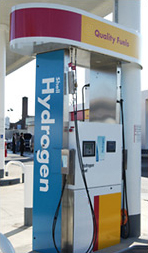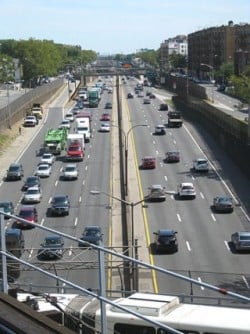For almost 40 years U.S. transportation held the No. 2 spot. In 2016, this sector moved to the top in emissions output, outstripping energy for the first time since 1978.
There are two reasons and two reasons only for the reversal: 1) transportation emissions increased; and 2) energy emissions fell. It’s that simple.
The good news is that overall U.S. greenhouse gas (GHG) emissions decreased. What is less clear is whether in America, further reductions in GHGs will be forthcoming under the current administration in Washington.
On the other hand, what is clear is, as the amount of driving increases, without greater efficiencies both incorporated into the automotive realm in terms of engine performance for internal-combustion-engine-equipped motor vehicles and in greater fuel economies being realized, all other things being equal, emissions from transportation will continue their upward ascent. In 2016, the aggregate and per-capita vehicle miles traveled rose to 3.2 trillion and close to 10,000 VMT, respectively. While per-capita VMT did not reach record levels, aggregate driving did.
Mode choice

Add to these more emissions-free vehicle buys and leases (use). If realized in great enough numbers, not only would the rise in emissions be slowed, but reversed.
Several factors or reasons could be behind why more such purchases and leases are not being made.

However, with rebates and other incentives, the tables could turn with more and more drivers getting into the clean-car driver’s seat, irrespective of whether the autos are bought or leased.
Next, consider that whereas the motor vehicle for all intents and purposes provides door-to-door service, transit typically does not. The so-called first-mile, last-mile hurdle could be all it takes to keep a motorist stuck behind the wheel, even if the motorway commute takes longer and/or is lengthier.
Crashes
However we travel, whether on a city transit bus, in an urban rail conveyance such as via light rail transit, a commuter or long-distance passenger train, in an automobile or by boat, we must feel that the choices we make, are correct and, in so doing, we are going to arrive safely at our destinations.
Not to digress too much, but one observation of mine is that with all of the features offered on motor vehicles these days, you might think autos are safer than what has been the case in the past. For a time, the numbers of motor vehicle crash-related fatalities occurring on American roads were getting fewer. However, the numbers of such are right back up to where they once were at about 40,000 per year. The question is why the increase?
Distracted driving and/or lack of attention paid to driving. More people driving. More people driving more often. More people driving longer distances. More vehicles not being properly maintained with such developing mechanical and/or electrical issues or failures like a tire blowout occurring, for instance. A greater number of on-road hazards due to lack of enough infrastructure spending to keep the country’s travel infrastructure in a state of good repair. Manufacturer defects. All of this could explain the higher numbers. If so, this could very well mean the probability of a crash is higher.
Bottom line, transportation modes should be getting safer, not the other way around. Technology will no doubt play a critical role in terms of transportation development.
Land planning
Then there is the way in which land is utilized. How land is used can have a huge impact on how people get around. And, this, in turn, can influence pollutant amounts in the air.

The way forward
That transportation is now the leading contributor of emissions in the United States is no accident. Things did not get this way overnight and putting transportation on a cleaner path likewise will take time. But, it is an action worth investing in.
Remember: In this regard, doing nothing at all solves nothing. Fortunately, there are many places that are leading the way in being on board and on the right track. The reality is that pollution can be conquered. Whether it is or not is ultimately up to us. The time to get this right is now.
This post was last revised on Dec. 10, 2020 @ 7:28 p.m. Pacific Standard Time.
– Alan Kandel

What are the worst transportation emitters? How much does 1 bus vs 1 train emit? Is there a chart for comparison? I think visualizing this data would be helpful for people to see just how each sector contributes.
Point taken.
In May 2014, I posted: “For National Transportation Week, road, rail, air compared.”
Here’s an excerpt.
“One of the chief considerations when discussing transportation is the quantification of emitted pollutants; in other words, how much of what type of pollutant is being emitted one mode compared with others? For illustrative purposes, compared are airplane (A), car (C) and high-speed train (HST) for the following pollutants: Carbon dioxide (CO2), particulate matter (PM), sulphur dioxide (SO2), nitrogen oxides (NOx) and non-methane hydrocarbons (NMHC).
“The information below is referenced from ‘Figure 11 A modal comparison of air pollutant emissions.’ Please keep in mind CO2 is measured in kilograms (kg) while all other pollutants are measured in grams (g). Please also note that the Frankfurt to Hamburg route in Germany was selected and the ‘Characteristics and components’ are expressed in ‘units per person travelling.’
“CO2 – 77.1 (A), 86.0 (C), 19.2 (HST)
PM – 2.1 (A), 21.2 (C), 1.0 (HST)
SO2 – 43.4 (A), 3.2 (C), 19.5 (HST)
NOx – 268.3 (A), 223 (C), 17.2 (HST)
NMHC – 20.8 (A), 18.3 (C), 1.1 (HST)
“To sum up, only for particulate matter, are airplane and high-speed train comparable. For sulphur dioxide, for ‘units per person travelling,’ the car is the least polluting, while for carbon dioxide, nitrogen oxides and non-methane hydrocarbons, for ‘units per person travelling,’ high-speed train is the most environmentally friendly.”
Link here: https://alankandel.scienceblog.com/2014/05/15/for-national-transportation-week-road-rail-air-compared/
I hope this helps.